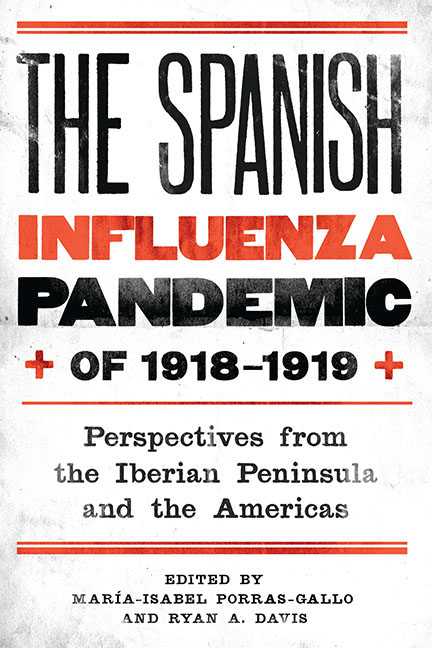 The Spanish Influenza Pandemic of 1918–1919
The Spanish Influenza Pandemic of 1918–1919 Book contents
- Frontmatter
- Dedication
- Contents
- Introduction: Emerging Perspectives of the Spanish Influenza Pandemic of 1918–19
- Part One Scientific Discourse: Now and Then
- Part Two Social Responses: Human and Institutional Actors
- Part Three Interpreting the Epidemic: Sociocultural Dynamics and Perspectives
- 9 A Tale of Two Spains: Narrating the Nation during the 1918–19 Influenza Epidemic
- 10 The Spanish Flu in Argentina: An Alarming Hostage
- 11 Epidemic Disease, Local Government, and Social Control: The Example of the City of Alicante, Spain
- 12 The Gendered Dimensions of Epidemic Disease: Influenza in Montreal, Canada, 1918–20
- 13 Remembering and Reconstructing: Fictions of the 1918–19 Influenza Pandemic
- Selected Bibliography
- List of Contributors
- Index
13 - Remembering and Reconstructing: Fictions of the 1918–19 Influenza Pandemic
from Part Three - Interpreting the Epidemic: Sociocultural Dynamics and Perspectives
Published online by Cambridge University Press: 14 March 2018
- Frontmatter
- Dedication
- Contents
- Introduction: Emerging Perspectives of the Spanish Influenza Pandemic of 1918–19
- Part One Scientific Discourse: Now and Then
- Part Two Social Responses: Human and Institutional Actors
- Part Three Interpreting the Epidemic: Sociocultural Dynamics and Perspectives
- 9 A Tale of Two Spains: Narrating the Nation during the 1918–19 Influenza Epidemic
- 10 The Spanish Flu in Argentina: An Alarming Hostage
- 11 Epidemic Disease, Local Government, and Social Control: The Example of the City of Alicante, Spain
- 12 The Gendered Dimensions of Epidemic Disease: Influenza in Montreal, Canada, 1918–20
- 13 Remembering and Reconstructing: Fictions of the 1918–19 Influenza Pandemic
- Selected Bibliography
- List of Contributors
- Index
Summary
Anguish verged on overwhelming the very medium that carried it, perhaps causing the air to bleed black ash or gray dust.
—Myla Goldberg, Wickett's RemedyA single death is a tragedy; a million deaths is a statistic.
—Attributed to Josef StalinNarrative is the medium that must carry and communicate the burden of past suffering. In Myla Goldberg's historical novel, a Boston family learns in the fall of 1918 that the eldest son has died of influenza in the army. Lydia, his sister, is walking home from the hospital—where she has just learned of her little nephew's death from the flu—when from the street she hears the terrible sound of her family's grieving. She knows it is being replicated throughout the city and imagines that the air itself must be damaged by the weight of so much pain. She imagines the air bleeding ash, or dust, the fallout not of a single damaged body but of a kind of holocaust.
A profound cultural and ethical implication of major epidemics is the loss of access to personal narratives. When the collective replaces the individual as protagonist, and the health of the public takes precedence over that of the individual, the resulting reductionism elides the particular and the subjective. As Stalin is said to have observed (and the irony of this attribution is apt), there is a paradox in the multiplication of personal catastrophe throughout a society, where the moral and emotional significance of an event is in inverse proportion to its extent or its incidence. The human imagination can inhabit the meaning of a single human calamity; multiply it across an entire population and the mind is overwhelmed. A million deaths, let alone the fifty or a hundred million caused by the pandemic, cannot be recounted as a meaningful story; they can only be counted, reduced to statistics, and trusted to speak for themselves—and they can speak only by reducing the particulars of suffering to intangible abstractions.
It makes sense that individual, embodied, deeply subjective representations of the pandemic, and particularly of the disease's felt effects on the lived bodies of the infected, would be missing, overshadowed by the enormity of global social disruption.
- Type
- Chapter
- Information
- The Spanish Influenza Pandemic of 1918–1919Perspectives from the Iberian Peninsula and the Americas, pp. 248 - 264Publisher: Boydell & BrewerPrint publication year: 2014
